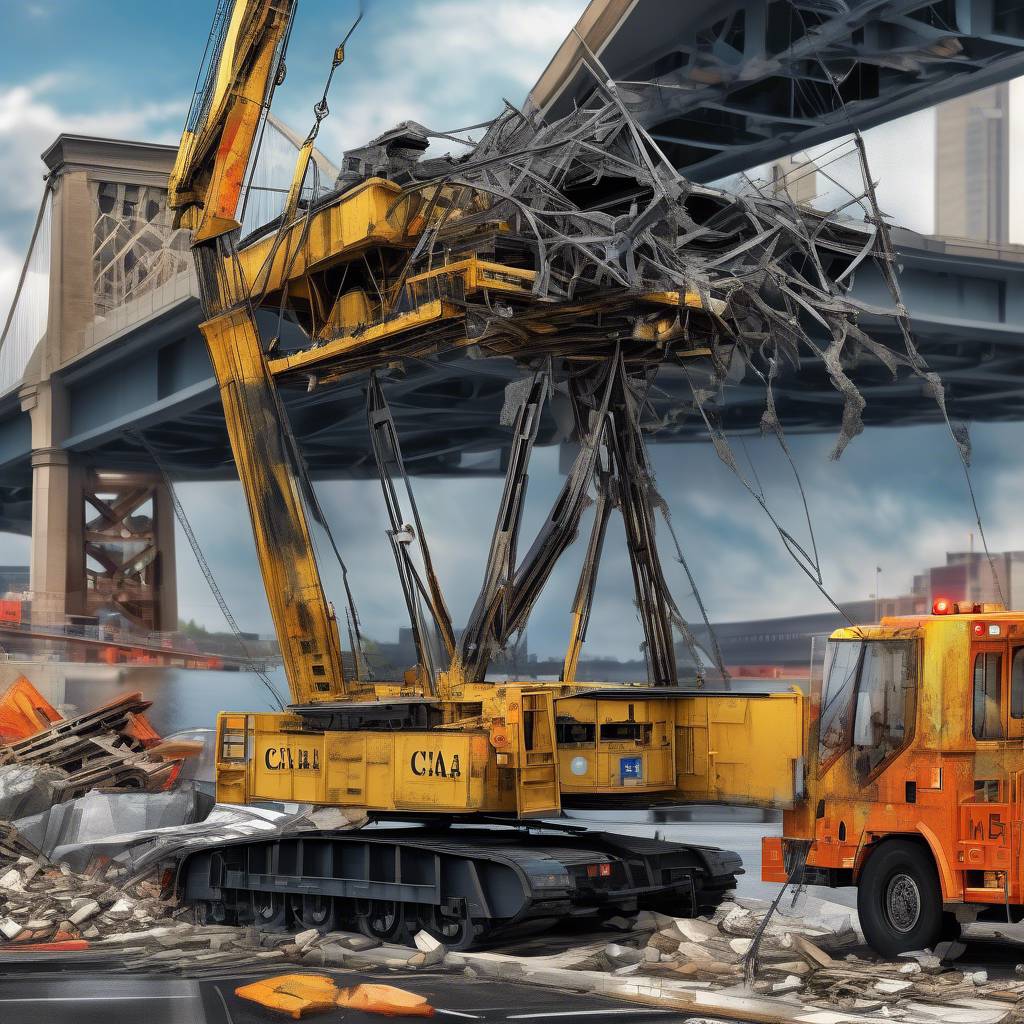The Chesapeake 1000, a powerful floating crane with a capacity of up to 1,000 tons, has arrived at the Francis Scott Key Bridge collapse site in Baltimore to assist in removing debris. Originally built in 1972 as the Sun 800, the crane played a significant role in a secret CIA mission known as “Project AZORIAN” during the Cold War. The mission involved the recovery of a Soviet nuclear submarine that sank in the Pacific Ocean, and the crane was used to construct the vessel used in the operation, the Hughes Glomar Explorer. The crane’s capacity was later increased to 1,000 tons, and it was acquired by Donjon Marine Co. Inc. in 1993.
The arrival of the Chesapeake 1000 has provided hope in the search for the four missing construction workers following the collapse of the Key Bridge. The crane, described as the largest in the Eastern seaboard by Maryland Gov. Wes Moore, has a length of nearly 200 feet and a boom of 231 feet. The collapse was caused by the cargo ship Dali striking a pillar of the bridge, resulting in the death of six individuals. The Key Bridge Response 2024 Unified Command, consisting of various agencies including the Coast Guard and Army Corps of Engineers, is working to monitor and prevent any further environmental hazards resulting from the collapse.
Project AZORIAN, the mission in which the Chesapeake 1000 played a role, was initiated following the sinking of a Soviet submarine carrying nuclear missiles in 1968. The Hughes Glomar Explorer, disguised as a deep-sea mining vessel owned by Howard Hughes, was used to retrieve part of the submarine in 1974. While the operation did not fully meet its intelligence objectives, the CIA considers it to be one of the greatest intelligence coups of the Cold War. The Explorer managed to recover the bodies of six Soviets, but a part of the submarine broke off during retrieval, leading to the exposure of the mission by the media.
The presence of hazardous materials on the cargo ship Dali, including containers loaded with potentially harmful substances, has raised concerns for environmental impact. On-site crews are actively assessing and monitoring the situation to prevent any further discharge or release of dangerous materials into the marine environment. The industrial hygienists have evaluated the impacted containers for potential hazards, and efforts are underway to minimize the environmental consequences of the collapse.
The history of the Chesapeake 1000’s involvement in a pivotal Cold War intelligence operation adds an intriguing layer to the recent events at the Francis Scott Key Bridge collapse site in Baltimore. The crane’s connection to Project AZORIAN underscores its versatility and importance in critical operations spanning decades. As efforts continue to recover the missing construction workers and clean up the debris at the site of the collapse, the presence of the Chesapeake 1000 serves as a beacon of hope for a successful resolution to the tragic incident. The coordination between various agencies and the utilization of specialized equipment like the floating crane highlight the dedicated efforts to address the aftermath of the bridge collapse and mitigate any potential environmental risks.









